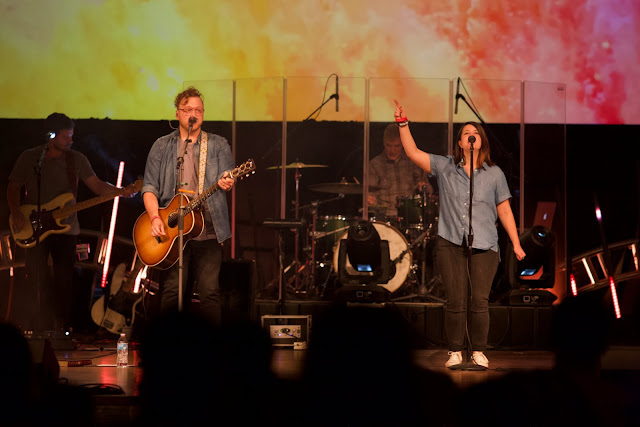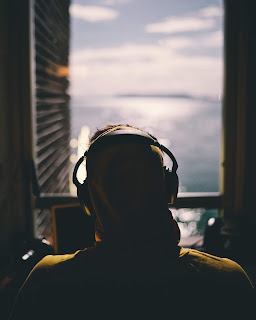Click It or Ticket: Click Tracks Save Lives
I remember the very first time I ever attempted to play drums with a click. It was at our band’s rehearsal, and it was kind of really bad. I didn’t even bring my own headphones. My friend held up his physical metronome (this was not too long before the days of smart phones and metronome apps) to my ear while I played about as loud as I could along with most everyone else in the band. Did I say it was bad? Cause um. It was bad. I would get off beat and wouldn’t even notice that I was off for a really long time. Then I would just stop playing to figure out where the beat was and everyone would be like, “What’s going on? Why are you stopping?” I think we tried it and crashed miserably about 4 times before we all decided that playing with a click is not going to work for us, and we’re just wasting our time trying.
Maybe you’ve come to the same conclusion as I did then. Maybe you think a click track ruins flow or creativity or the groove, and there’s no use in trying because you just don’t have good time. Well, I’m here to tell you, there’s still hope for you. Let’s first talk about reasons why playing with a click in a live setting is important before I make some recommendations on how to get started playing with a click.
- It makes you a better player. I don’t know if you know this, but the ability to keep time is a desirable trait in any musician. If you ever want to record something, you’re going to run into a click. It makes sense to build that skill before it’s time to hit the record button. Playing consistent time establishes an expectation of where the beat is going to be, and when you meet that expectation, it feels good. That feeling you create by your timing, that’s called groove.
- It holds everyone accountable to playing together. Now it’s obvious who is pushing the tempo or who is dragging. Even if you are the only one that is listening to the click, there will still be a clear tempo that everyone is accountable to that YOU state. The other members of the band are not going to be fighting over who’s got the right tempo; they know you have it.
- You will never start a song too fast or too slow ever again. Plus, you have an unbiased opinion that will back you up if someone says, “it feels too slow”. Instead of that being your fault, you can be like, “It’s not too slow; it’s the same tempo as the recording, and here’s the proof.” Boom. Unbiased opinion in your favor.
- It opens up worlds of possibilities for production. If you play to a click, other members of the band can have their effects reliably synced up perfectly every time you play the song. You can also play along with backing tracks that are synced with the same click. Whoah. You can also sync videos and lights to the same click track. Double whoah.
Here’s my advice that I hope will help you achieve your wildest dreams of playing with a click.
First step: Don’t use a click. Wait. What? DON’T use a click?! That can’t be right!? Well, hear me out. When I first started playing with a click and I found myself off and had no idea how I got off, my issue was not the click. My issue was mental. I didn’t understand the relationship between the rhythm I was playing and the tempo. If this is your case, playing with a click is not going to help you play with a click.
What needs fixing is your understanding of your rhythm. Slow it down - that gives your brain more time to think about what’s happening. Try to tap your foot with where the metronome should go as you play your rhythm. Or maybe it’s easier to speak the tempo's beat as you play your rhythm. This is going to be hard, but this is where the disconnect lies. What this will do is establish an awareness of where the beat is within your part that you play. You need to be able to feel where the beat is in your part without something telling you where it is. THEN when you turn on the click, you’ll have an external source telling you where the beat is, and you’ll know exactly how your part fits in that beat.
Second step: You have to listen to the click as you play. It seems really obvious, but it's almost natural to listen to yourself play and tune everything else out. I like to think of the click as an old friend whose name is Click. He just wants to play music with me whenever I want to cause he’s a good buddy like that. Click is a little challenged though because he only ever plays one rhythm for the whole song, bless his little heart. And he’s not very good at following me, so I have to adjust to him all the time. It’s kind of annoying, but we’re friends, so I let it go. What this perspective does for me is it lets me listen to the click instead of tuning it out because it’s not following me. I’m now listening to it as I play because it’s my “friend” and I value its contribution to the music we’re making.
It takes time and practice to play with a click well. So go! Click away! Impress your friends by playing in time!






Comments
Post a Comment